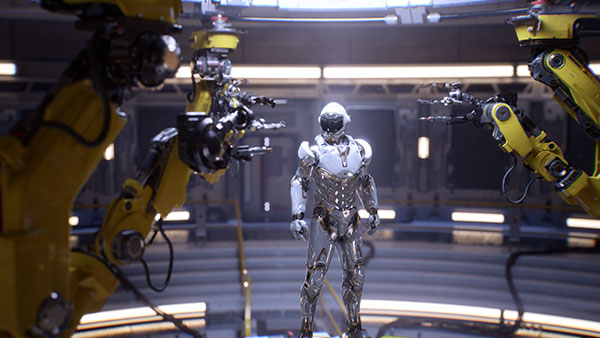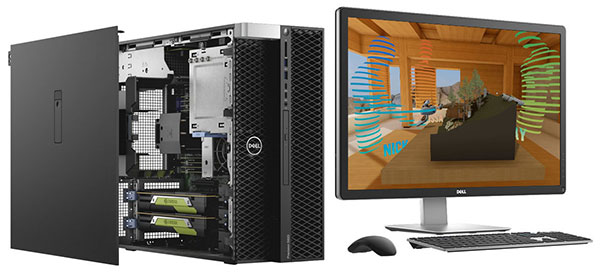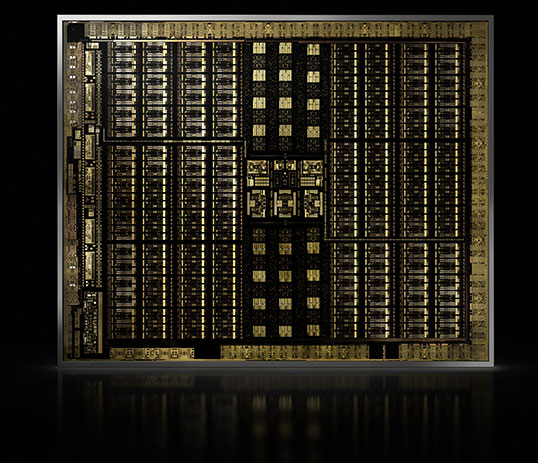Rendering CAD Models Fit for Marketing
Connected companies need to communicate visually from engineering to the end user using high-quality renders.

NVIDIA Turing enables production quality rendering and cinematic frame rates. Image courtesy of NVIDIA.
Engineering Resource Center News
Engineering Resource Center Resources


Latest News
May 10, 2019
Organizations today are implementing more collaborative workflows that connect the technology and business side to get the best products to market as fast as possible. A main part of this transition is the use of realistic renderings that help project managers think about the design’s aesthetic before it goes to manufacture, or that can be used directly in marketing materials.
“The visualization market is growing due to the availability of more powerful and less expensive visualization technologies and also as more customers add design analysis to their portfolio,” according to a Jon Peddie Research press release. The research firm expects the market for computer graphics software to grow to $17.7 billion by 2021, up from $16.1 billion in 2017 (not counting services, maintenance, and other aspects).
To keep up, design engineers need the right software and hardware to efficiently process everything. Some small- to mid-sized businesses might think these capabilities are out of their league and capability scope, but in fact are possible with a workstation and the right software.

For software, engineers want capabilities to inject as much realism as easily as possible, which means a quick way to apply textures, lighting and even animations. Today’s rendering software can be integrated into popular CAD packages, or can use imported CAD data, so engineers are not recreating the model from scratch.
Ray Tracing Rendering Software
Some software can also output web-ready content, such as Dassault Systemes’ SolidWorks Visualize and Lumiscaphe’s Patchwork 3D. The big advantage of these types of programs is that they use ray tracing, AI-based denoising and rasterization, which brings new levels of realism. With functions that help engineers slice, animate and decorate parts, these programs make it easy to export renderings into web-based content for marketing teams.
With SolidWorks Visualize, engineers can easily render their data directly within the SolidWorks interface. Designed to leverage the Iray rendering engine and 4K graphics, users no longer experience a slowdown when using RealView Graphics, which supports advanced shading in real time, including shadowing and reflections. With software updates, engineers will see faster performance with assemblies larger than 500 components compared to previous versions, according to NVIDIA.
Patchwork 3D also relies on CAD data to create interactive, realistic models via features such as pre-built high-dynamic-range (HDR) environments, real-time lighting, multi-track animations, real-time material editing and lighting layers. This means that not only can engineers polish the product’s aesthetics, but also efficiently place products into relevant, and eye-catching backgrounds to make product designs ready for marketing. For a more immersive experience, Patchwork 3D models are also compatible with virtual reality hardware.
In-house vs. Off-site Rendering
When it comes to hardware, some organizations might think they need to invest in cloud services, render farms or outsource the rendering process. However, real-time product renderings can be created with a modern engineering workstation.
Doing rendering in-house not only reduces back-and-forth and cost—as organizations would need to pay for cloud space, data center rentals or service contracts—but also gives engineers direct control over how they want to use the hardware. Having immediate access to real-time rendering on their workstations makes it easier for design engineers to incorporate it into their workflow.
To ensure engineers can properly render designs and also meet deadlines, organizations must invest in hardware that has adequate GPU technology and memory resources. While engineers can generate renderings with CPU-based hardware, using workstations equipped with an NVIDIA GPU and large amounts of low-latency RAM allows engineers to offload rendering workloads from CPU resources.

Workstations from the Dell Precision line feature the Dell Performance Optimizer, which lets engineers see how certain applications use hardware and set profiles for various use cases to automatically and properly allocate resources. Knowing how workstations hardware resources to render CAD visuals also makes it easier for managers to modularly upgrade the hardware as needed.
Industry hardware manufacturers are noticing the need for visualization hardware. NVIDIA introduced the Quadro RTX line at SIGGRAPH 2018, which is specifically designed to support ray-tracing and visualization. Based on the new Turing architecture, the Quadro RTX 6000, for instance, has 4,608 CUDA processing cores, 576 Tensor cores, 24GB of GDDR6 memory and a Rays Cast rate of 10 giga rays/sec.
As a companion to the Quadro RTX line of hardware, NVIDIA also has the RTX platform for software developers. It provides software application programming interfaces and software development kits for enhancing graphics, photos, imaging and video processing.
“Quadro RTX marks the launch of a new era for the global computer graphics industry,” said Bob Pette, vice president of Professional Visualization at NVIDIA, via a press release marking the RTX launch. “Users can now enjoy powerful capabilities that weren’t expected to be available for at least five more years. Designers and artists can interact in real time with their complex designs and visual effects in ray-traced photo-realistic detail.”
Subscribe to our FREE magazine, FREE email newsletters or both!
Latest News





